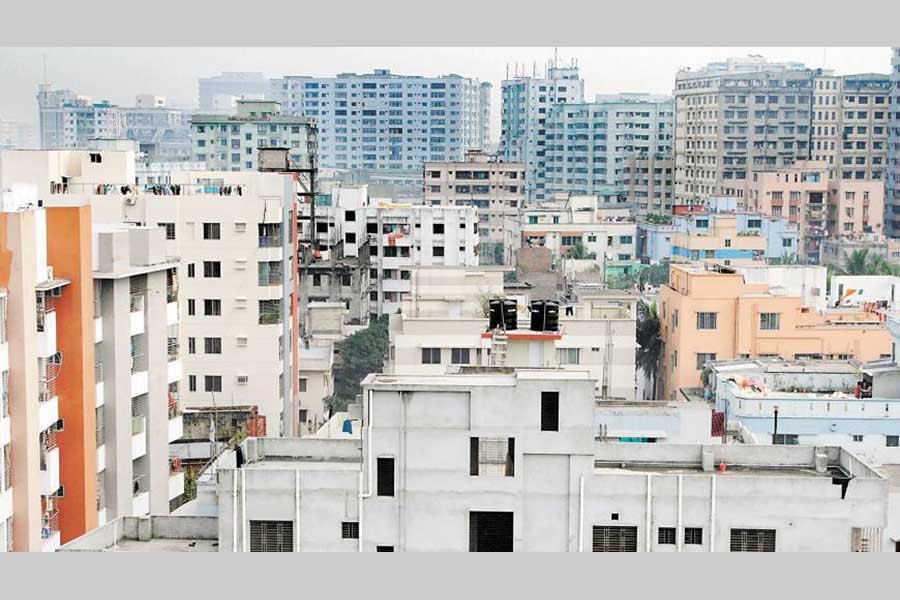Divers could not recover the body of Hridoy, about a four-year-old boy, who fell into the canal full of obnoxiously polluted water in the city's Mugdapara area in three days. The precariously hanging bamboo bridge, the only means of maintaining connection between the city and the house where the boy lived with his family, is a potential threat to anyone crossing over it. In the area hundreds of homes use such bamboo bridges for crossing the canal.
If Hridoy is a victim of unplanned urban extension, child deaths in sewerage system, canals, open WASA pipe, boreholes, manholes etc; point to the fact that the capital city is not particularly mindful of children's need -no matter which class of society they belong to. A number of studies have determined the most and least stressful cities in the world. Earlier, Dhaka was found to be one of the worst cities to live in -in fact third from the bottom. In the Safe Cities Index prepared by the Economist Intelligence Unit, cities have been ranked as the least safe and safest too. Thomson Reuters Foundation ranked cities in terms of their friendliness to women. On all such counts capital Dhaka has fared very poorly.
One wonders where Dhaka would have found itself if cities were ranked on the basis of child-friendliness. The plunge of a four-year-old boy into an open WASA pipe near a sports ground of Shajahanpur Colony and the recovery of his body several hours later best illustrate the mindlessness with which children's space in the city is narrowed and turned hazardous. In July 2016, a six-year-old girl and a four-year-old boy plunged to their death in a canal and sewer of Mohakhali and Mirpur respectively within a week. Until then as many as 12 children lost lives in canals, pipes, drains and boreholes. Then in September, a boy fell to his death in a canal in the Basabo area. Earlier a five-year-old boy fell into an open manhole to be washed away into the Buriganga.
Most of these children fell into the death trap when they came out to play. Evidently, the places they were playing on were not always designated children's parks or playgrounds. They had to look for open spaces and were hardly aware of the danger posed to their safety. But poor and lower-income families live mostly in unprotected houses with no boundary walls and their children sneak out in the open looking for friends to run and play together. The surrounding areas are hardly ideal places for playing any recognised game or sport. So they have to invent sports of their own. Thus they are exposed to life-threatening danger at times.
The middle class and the affluent segment of society maintain as much strict vigil as possible to ensure that their children do not get out of their residences unaccompanied. So they can avoid tragedies involving child deaths in canals and drains. But then this is no guarantee for healthy growth of child psychology. If children cannot run and play in the open, they get accustomed to a segregated life. Here the threat comes from high-tech gadgets. They become accustomed to smart phone, tablet, computer and video.
Concerned about children's safety and security, parents feel comfortable when they see that their children do not insist on going out to play with friends. But its impact is mostly highly adverse on the physical and mental growth of their sons and daughters. Human beings must be in touch with Nature. But in Dhaka and other large cities in the country, open spaces including children's parks are scarce. The few playgrounds there are so ill maintained that they are unfit for playing games. And here children can hardly expect their turn against the competing elders who mostly occupy the ground.
In developed societies, children enjoy extra attention wherever they visit. When their school buses proceed towards school, private cars and other vehicles allow them to pass ahead. In restaurants they enjoy distractions or are given kits for drawing or playing before they are served food. Even there is arrangement for them to sit comfortably. Here no one feels the special need for children.
First the need is to see the world through children's eyes. What they really enjoy doing is where their heart is. Maybe, at times they may complain or make demand for something unreasonably. But who does not do so? Better it would be to argue soothingly in order to convince them of the merit or demerits of things. Thus they will grow up thinking rationally. When there is need for treating children with care and compassion, in most cases this society brutalises them physically and psychologically.
If society has to develop from within, it has to ensure that children are treated well and where possible given the best of care for their well-being. In cities like Dhaka, children are robbed of their childhood. Most people are not even aware of the losses they suffer as a result. Dhaka has earned enough infamy on many counts, the mindless treatment of children will only add yet another saga to the list. The education system does not help at all. It has left hardly any time for school children to play games and sports. Now the need is to incorporate extra-curricular activities for them to pursue alongside their study. For this to happen, creation of more open spaces and playgrounds and change in the system of education should be the agendas to urgently focus on.


